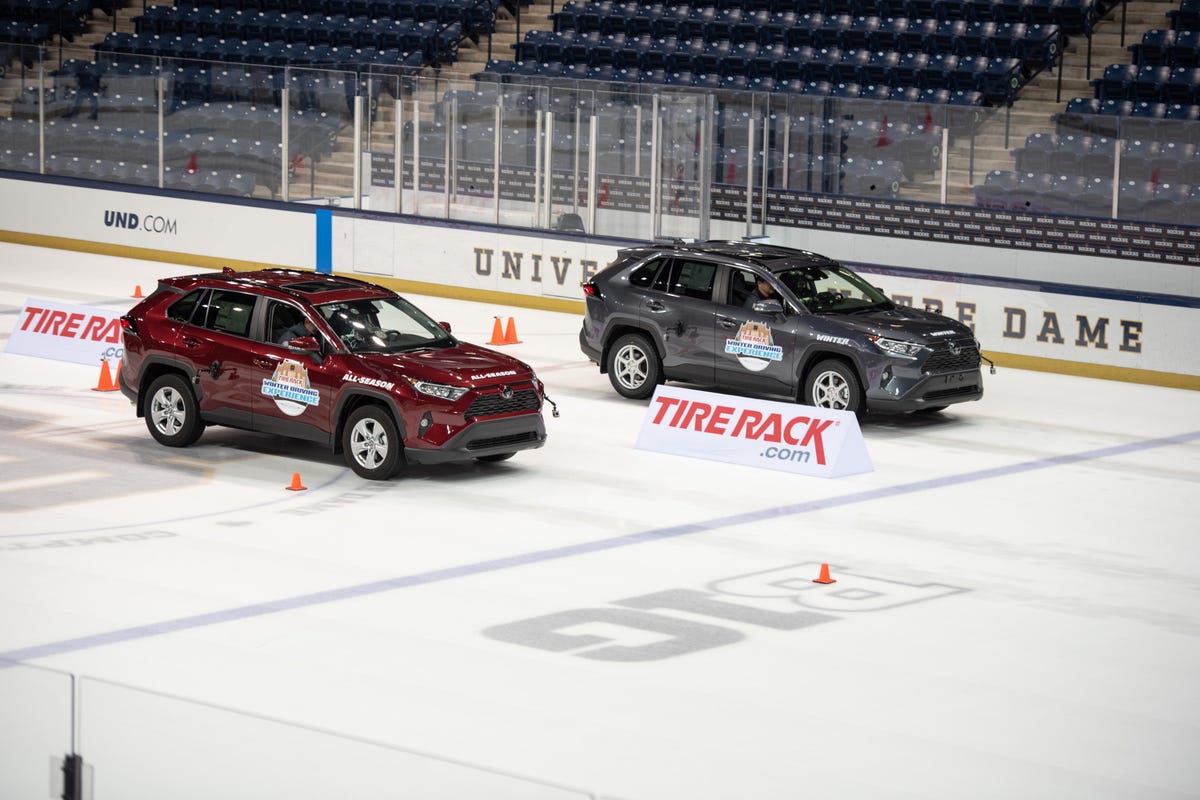Winter tire education from Tire Rack
When it comes to driving through slush, snow and ice, nothing beats riding on a set of winter tires.

To spread the winter tire gospel, Tire Rack conducted acceleration, braking and turning tests on an ice rink in South Bend, Indiana.
For the test, two identical 2019 Toyota RAV4s were used. One was on its stock Firestone Destination all-season tires, while the other was riding on Bridgestone Blizzak DM-V2 winters.
Under acceleration, with the help of all-wheel-drive and traction control, there wasn't too much difference between the all-season and winter tires.
However, under braking is where the differences began. From roughly 14 mph, the Blizzak turned in a 5.5-foot shorter stopping distance than the Destination.
During the turning exercises, Tire Rack test drivers performed 90-degree turns at 9 mph.
At the slower speeds, both cars were able to complete the turns without much issue. The problem is that most people don't usually take turns at such slow speeds.
When speeds were bumped up to 12 mph, however, the winter tires quickly separated itself from the all-seasons.
The Toyota RAV4 on the all-season Firestones plows forward off the course, while the RAV4 with the Bridgestones simply grips and completes the turn.
Tire Rack's demonstrations put the benefits of winter tires front and center. Thanks to specifically developed compounds and tread design, winter tires help provide much more traction in slush, snow and on ice.
While all-season tires are serviceable in a wide range of driving conditions, they don't excel in any particular condition. Which is why nothing will perform better in cold and slick conditions than a winter tire.

